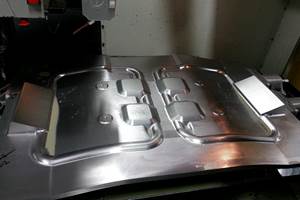How To Invest Your Accumulated Cash Profits
The pride of the American capitalist system is the successful family business. These entrepreneurs have found their way around a variety of obstacles to become “successful business owners,” or SBOs for short.
Share





The pride of the American capitalist system is the successful family business. These entrepreneurs have found their way around a variety of obstacles to become “successful business owners,” or SBOs for short.
Many SBOs have excess funds to invest (in places other than back into the operation of their businesses). However, many SBOs have the following lament: “I know how to make money in my business. However, when it comes to making money with excess funds to invest, either I don’t have the time to watch it, don’t know how to watch it, or rely on my investment advisor. When the market is up, my advisors do fine; when it’s down, they do lousy. What should I do?”
Regular readers of this column know the author is a tax planner who finds legal ways to avoid all types of taxes—particularly estate taxes. Doing this requires, among other things, getting my client’s personal balance sheet.
One thing balance sheets reveal about the investments of SBOs is that their success or failure in the stock market and other investments generally mirrors the Dow Jones—happy on the way up and painful on the way down.
Now what about that excess cash? The SBOs have had terrible investment results. The investments are almost always conservative and are divided among CDs and money market funds, municipal bonds and varieties of annuities.
After taxes and inflation, net earnings on investments in CDs and money market funds are typically less than 3 percent and are sometimes even negative. Income-tax-free bonds not only have a low rate of return, but they also fall in value when interest rates rise. As far as annuities go, I have never had a client tell me that he or she is happy with the results of an annuity. I would like to hear from any reader who has personally had a positive experience with any annuity.
As you can imagine, almost every estate-planning consultation with an SBO requires serious consideration of the client’s investments. This includes an examination of the investment safety, risk, tax consequences, rate of return and other factors. We must also discuss alternate investments to determine their profitability, risk and how they are taxed, among other things.
Currently, the most popular alternative investments are senior settlements (SS), also called “life settlements.” The following quotes from The Wall Street Journal and USA Today explains why SS plans are becoming such a popular investment.
“Life settlements (has become a) trillion dollar industry. . .dominated by institutional investors including Berkshire Hathaway (billionaire Warren Buffet’s company), AIG and CNA. Their pursuit of this market is related to the degree of safety, high yields in excess of 15 percent per year and the fact that a life settlement is not affected by market forces.
“Life settlements are a very good option for the investor that has, as his or her investment philosophy, a desire for a secure, safe and ‘no risk’ investment...It is for your ‘nest egg’ money...It is not considered a security by the SEC. Therefore, it is not normally provided as an investment option by stock brokers.”
You may be wondering if the “little guy” (as opposed to an institutional investor) can invest in SS. The answer is “Yes.” It’s all made possible by a small, publicly traded (NASDAQ) company. It has had an average rate of return of 16.28 percent per year during the company’s 14-year operating history.
If you want to make a killing on your investments, then SS plans are not for you. However, if a rate of return of 16 percent or more with no market risk is of interest to you, then fax me your name, address, phone numbers (business, home and cell) and estimated amount to invest at 847-674-5299. Note that there is a minimum investment of $50,000 for accredited investors.
Related Content
How to Evaluate Measurement Uncertainty
Manufacturing and measurement are closely coupled. An important consideration for the use of measurement results is the associated measurement uncertainty. This article describes common metrology terms and provides an example uncertainty analysis.
Read MoreTips for Designing CNC Programs That Help Operators
The way a G-code program is formatted directly affects the productivity of the CNC people who use them. Design CNC programs that make CNC setup people and operators’ jobs easier.
Read More4 Tips for Staying Profitable in the Face of Change
After more than 40 years in business, this shop has learned how to adapt to stay profitable.
Read MoreHow to Determine the Currently Active Work Offset Number
Determining the currently active work offset number is practical when the program zero point is changing between workpieces in a production run.
Read MoreRead Next
Machine Shop MBA
Making Chips and 91 ”∆µÕ¯’挀 are teaming up for a new podcast series called Machine Shop MBA—designed to help manufacturers measure their success against the industry’s best. Through the lens of the Top Shops benchmarking program, the series explores the KPIs that set high-performing shops apart, from machine utilization and first-pass yield to employee engagement and revenue per employee.
Read MoreAMRs Are Moving Into Manufacturing: 4 Considerations for Implementation
AMRs can provide a flexible, easy-to-use automation platform so long as manufacturers choose a suitable task and prepare their facilities.
Read More


















